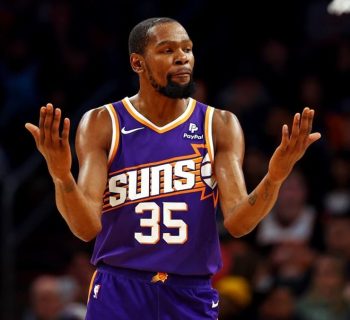NBA
High-Performance Mindfulness: Incorporating The Mental Health Resource Into The NBA

As NBA teams begin to integrate mental health resources into the overall working structure of their organizations, several key points should be taken into consideration so that practitioners can be most effective when working with players.
Before we dive in, it is important to note that, within the mental health spectrum, there are generally two avenues.
There is the clinical side, which focuses on diagnosing and treating behavioral disorders like depression, substance abuse and learning disabilities. There is also the applied/performance-related side, where the end goal is to improve on-court performance through techniques such as High-Performance Mindfulness.
Let’s jump in and break down some of the best practices and key considerations for successfully installing this resource within your staff:
Best Practices & Key Considerations
Player Buy-In
Player buy-in should be the number one priority. All other considerations should directly feed into facilitating and supporting this. With any sort of coaching, trust and rapport with the player are vital. The same thing holds for mental health resources/High-Performance Mindfulness coaches. Credibility and strong rapport with the player must be built.
This responsibility lies on the shoulders of the interpersonal skill-sets of the High-Performance Coach. However, much more of this responsibility resides with the decision-makers, who define the working parameters for the resource. If players do not like, trust or see value in the resource and the services offered, it is going to be very tough to make much headway. Before any substantial progress, this foundation must be in place first.
Staff Buy-In (Cooperation)
If a player senses that staff members, especially decision-makers, surrounding that player do not support or are sending mixed messages regarding the value, effectiveness, and acceptance of the mental health work, it can derail or block the initiative. When leaders within the organization outwardly support the role of the practitioner and initiative, it makes it that much easier to effectively serve the player.
In a perfect world, all levels of the organization are sending the same message to the player(s) regarding the role, value and implementation of the mental health practitioner. More realistically, outward support and clear definition of the practitioner’s role goes a long way.
- Defined Role: Clearly defining the role, will properly position the resource. It will also put players and staff members on notice regarding working parameters.
- Embed Resource in Coaching Staff: The highest probability for success is by having the resource sit on the bench during the game, ideally right between the player rotation. This is ultra-effective in improving performance and halting performance issues straight away as they arise during the game.
- The Dallas Mavericks, the Temple University Men’s Basketball Program, and Ironi Ness-Ziona Basketball Club of the Israeli Super League (FIBA Europe Cup) have all employed this set-up with success. Embedding a High-Performance Coach reinforces credibility and shows players that the team means business regarding the integration of the mental side of the game within the overall team dynamic.
- Direct Line of Communication: A direct line of communication from the mental health resource/performance coach to the decision-makers within the organization is vital. The mental and emotional responses of athletes are illogical and often unpredictable. So is the performance improvement of the player. It is very rarely a straight line up. A clean and clear feedback loop from the mental health expert to the decision-makers make this job much easier.
- Expert feedback presented consistently is a must, ideally in weekly or bi-weekly meetings. Confidentiality is always a major consideration. However, performance results and projective performance trajectories of a player are different than confidential information. When it comes to player performance, results, trajectories and player progression can be shared and must be put into context.
Measurable Success
In High-Performance Mindfulness, there should be measurables, or metrics, showing the improvement for the player. Performance coaches should be judged by the tangible production they can facilitate for a player or set of players. In a results-based business such as professional basketball, showing the value add via statistical improvement is important. This is especially true in a growth space such as Mental Performance.
Finding a way to do this so that it does not infringe upon the domains of other coaching staff members is also a consideration. However, not acknowledging that Mental Performance has the potential for improving statistical on-court performance would be missing the point.
Time
There is a gestation period that exists in High-Performance Mindfulness Coaching. Just like any other type of coaching, there is a period between the implementation of the work and the actual production improvement results. Understanding this will provide clarity and context.
There are just some of the best practices for helping jump-start your mental health and High-Performance Mindfulness initiatives at the NBA and professional basketball level.
The application of the mental health and High-Performance Mindfulness resources within the NBA and professional basketball is a little like the wild west right now. Through trial and error, organizations will see what works and what doesn’t within the context of their given situation.
One thing is for sure, though: This space is growing and growing fast, and decision-makers better have foundational understanding for how to give this initiative the best probability for success.













